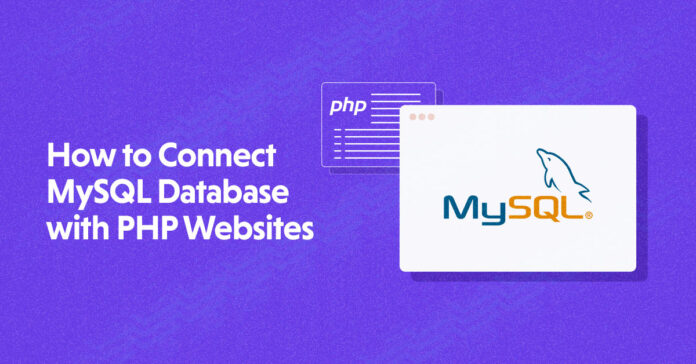PHP is a powerful server-side scripting language used for web development. One of its main features is its ability to interact with databases, such as MySQL. In this blog, we will explore how to make a connection between PHP and MySQL, a popular relational database management system.
Step 1: Installing MySQL and PHP
Before we start, make sure that you have installed MySQL and PHP on your system. If not, you can download and install them from their official websites. Once you have installed both MySQL and PHP, you can proceed to the next step.
Step 2: Create a database and table
Next, create a database and a table in MySQL that will be used to store and retrieve data in PHP. For example, you can create a database named “mydatabase” and a table named “mytable” with the following SQL query:
CREATE DATABASE mydatabase;
USE mydatabase;
CREATE TABLE mytable (
id INT(6) UNSIGNED AUTO_INCREMENT PRIMARY KEY,
firstname VARCHAR(30) NOT NULL,
lastname VARCHAR(30) NOT NULL,
email VARCHAR(50),
reg_date TIMESTAMP DEFAULT CURRENT_TIMESTAMP ON UPDATE CURRENT_TIMESTAMP
);
This will create a database named “mydatabase” and a table named “mytable” with five columns: id, firstname, lastname, email, and reg_date.
Step 3: Connect PHP with MySQL
To connect PHP with MySQL, you need to use the mysqli_connect() function, which establishes a connection between PHP and MySQL. Here’s an example:
$servername = "localhost";
$username = "username";
$password = "password";
$dbname = "mydatabase";
// Create connection
$conn = mysqli_connect($servername, $username, $password, $dbname);
// Check connection
if (!$conn) {
die("Connection failed: " . mysqli_connect_error());
}
echo "Connected successfully";
In this example, replace “localhost” with the name of your MySQL server, “username” and “password” with your MySQL username and password, and “mydatabase” with the name of your MySQL database.
Conclusion
In conclusion, connecting PHP with MySQL is a simple process that can be accomplished using the mysqli_connect() function. Once you have established a connection, you can insert data into your MySQL database from PHP and retrieve it as needed. By following these steps, you can take advantage of the powerful features of PHP and MySQL to create dynamic, data-driven web applications.



Can you guide me through the next step?